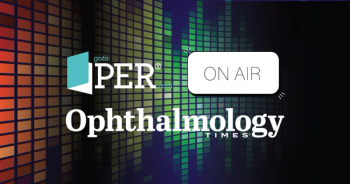
Q&A: Natalie Afshari, MD, FACS, championing on-label pediatric IOLs: turning advocacy into access

The path toward improved access to on-label intraocular lenses (IOLs) for pediatric patients hinges on collaboration, advocacy, and real-world data, according to Natalie Afshari, MD, FACS, the Stuart I. Brown MD Chair in Ophthalmology in Memory of Donald P. Shiley; Chief of Cornea and Refractive Surgery; and Vice Chair of Ophthalmology at the Shiley Eye Institute at the University of California, San Diego.
Afshari emphasized the importance of FDA-approved indications for children and highlighted the role of clinical evidence—such as data from the IRIS (Intelligent Research in Sight) Registry—in overcoming longstanding barriers to pediatric labeling in her presentation at the Collaborative Community on Ophthalmic Innovation (CCOI)-Stanford Summit: Shaping the Future of Ophthalmic Innovation, held July 23, 2025, in Palo Alto, California.1
Sheryl Stevenson, executive editor with the Eye Care Network, caught up with Afshari to discuss the importance of on-label pediatric IOLs.
Why it is crucial for these devices to be used within their approved indications for pediatric patients, and what challenges are currently preventing this from becoming more widespread?
Natalie Afshari, MD, FACS: Evidence from the IRIS Registry—which tracked over 5,000 surgeries in children under 21—shows that IOL implantation improves visual acuity (mean VA of 20/70 at 1 year), demonstrating real-world effectiveness in this age group.
Despite this, most IOLs remain off-label for pediatric use, limiting manufacturer liability and deterring formal support for pediatric applications.
It is crucial for IOLs to be used within their FDA-approved indications for pediatric patients because:
- On-label use ensures safety and accountability. FDA labeling includes age-specific indications, contraindications, warnings, and clinical data—specifically designed to guide safe use in children. When a device is approved for pediatric use, it’s backed by formal evidence that it works for this age group.
- Legal and liability protection. On-label use provides liability coverage for manufacturers and clarity for providers. Off-label use, although legal, lacks manufacturer accountability, which can pose legal and ethical complications.
- Better care outcomes. Labeling based on pediatric-specific clinical trials helps optimize outcomes by aligning treatment with the unique anatomical and developmental needs of children.
Several challenges are preventing the widespread use of on-label pediatric IOLs:
- Difficulty recruiting children for clinical trials. Pediatric trials face logistical and ethical barriers, making it hard to generate the necessary data.
- Limited commercial incentive. Because the pediatric cataract population is small, manufacturers may not see enough financial return to justify the cost of pursuing a pediatric indication.
- Heavy reliance on off-label use.
What strategies have been most effective in advocating for the use of on-label pediatric IOLs?
Afshari: Advocacy for on-label pediatric IOLs has been most effective when combining clinical research, professional society support, and regulatory collaboration. Large-scale real-world outcomes research, such as the IRIS Registry findings, serves as compelling evidence to encourage:
- Broader FDA labeling
- Industry investment in pediatric trials
- Reassurance for clinicians concerned about safety
Organizations such as the American Academy of Ophthalmology (AAO) and the American Association for Pediatric Ophthalmology and Strabismus (AAPOS) have amplified this work by issuing clinical guidelines and advocating for clearer regulatory pathways specific to pediatric devices.
What role does the collaboration among health care professionals, regulatory bodies, and families play in making pediatric IOLs more accessible to children in need? Can you provide examples of any successful partnerships or initiatives that have helped drive progress?
Afshari: Collaboration among health care professionals, regulatory bodies, and industry is essential through CCOI to improving access to pediatric IOLs. Each group brings a critical perspective: clinicians provide frontline insights into patient needs and surgical outcomes; regulatory agencies ensure safety and efficacy; and families advocate for patient-centered care and long-term outcomes. When these stakeholders work together, they can break down barriers to access, streamline regulatory pathways, and increase pressure on industry to develop and seek approval for pediatric-specific devices
The success of the IRIS Registry study by Malvina Eydelman, MD, and the AAO reflects multi-stakeholder collaboration—clinicians inputting data, health systems supporting the infrastructure, and professional societies analyzing outcomes.
This type of partnership is a model for how cross-sector collaboration can provide the evidence base needed to justify regulatory changes and improved access.
What are some of the most common misconceptions or barriers that pediatric ophthalmologists face when it comes to implanting IOLs in children, and how can clinicians work to overcome these challenges?
Afshari: A key misconception is that we don’t know enough about IOL safety in children. However, the IRIS Registry’s study of nearly 4,000 pediatric patients shows clear visual improvement over time, making a strong case for broader adoption and formal labeling. The study was done by Dr. Eydelman in collaboration with the AAO.
Looking ahead, what future developments do you foresee in the field of pediatric IOLs, and how do you think these innovations will impact patient outcomes in the coming years?
Afshari: Looking ahead, the field of pediatric IOLs is poised for meaningful advancements that could significantly improve visual outcomes and quality of life for children with cataracts. If devices are approved for pediatric use based on evidence like the IRIS data, future innovations—such as age-adjustable IOLs or next-generation materials—can be rolled out more quickly and confidently, improving long-term vision and reducing amblyopia risk.
Reference
Afshari N. On-label pediatric IOLs: turning advocacy into access. Presented at: Collaborative Community on Ophthalmic Innovation (CCOI)-Stanford Summit: Shaping the Future of Ophthalmic Innovation; July 23, 2025; Palo Alto, California.
Newsletter
Don’t miss out—get Ophthalmology Times updates on the latest clinical advancements and expert interviews, straight to your inbox.








































